Movement vs. Exercise
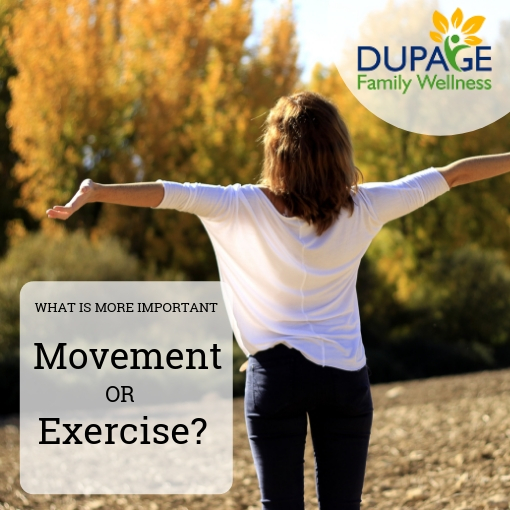 Everyone knows that exercise is important! But what if I told you that I was more concerned about the level of movement in your life, than how much you exercise?
Everyone knows that exercise is important! But what if I told you that I was more concerned about the level of movement in your life, than how much you exercise?
I know, it’s shocking! Our culture is so focused on exercise that we forget the value of simply moving throughout the day. We think that we are living an active lifestyle if we go to the gym regularly, however if we are sitting the rest of our day we are still living a sedentary life.
The Danger of Sitting
According to Dr. James Levine, the director of the Mayo Clinic-Arizona State University Obesity Solutions Initiative, “Sitting is more dangerous than smoking, kills more people than HIV and is more treacherous than parachuting. We are sitting ourselves to death.”
What is even more surprising is that the negative effects of sitting are even apparent in those who exercise daily. We need to change our view of movement and find ways to incorporate natural movement into each part of our day!
Read more ...
Are you Eating the Right Types of Fats?
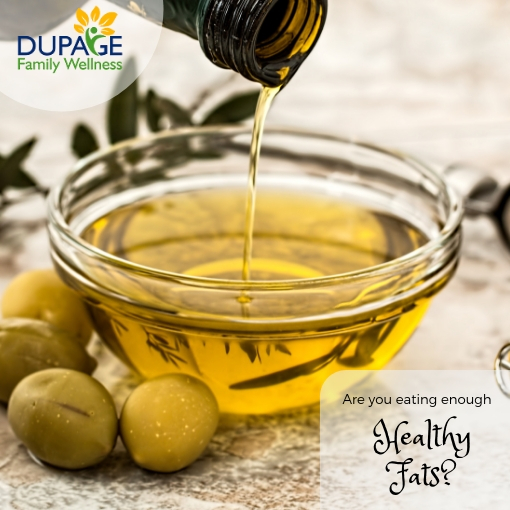 Many patients are afraid to incorporate fats into their diet, believing that eating fat will make them fat. They eat a lot of chicken breast, steamed veggies, low-fat milk, low-fat yogurt, and salads with fat-free dressing. It's not their fault. They have been taught for years by the media that eating fat is going to make them fat, BUT this is simply not true!
Many patients are afraid to incorporate fats into their diet, believing that eating fat will make them fat. They eat a lot of chicken breast, steamed veggies, low-fat milk, low-fat yogurt, and salads with fat-free dressing. It's not their fault. They have been taught for years by the media that eating fat is going to make them fat, BUT this is simply not true!
Are You Eating Enough Fat? Are You Eating the Right Fats? It is a topic that can get very confusing, very quickly. Eating the right fats will make a HUGE impact on inflammation within your body. Eating fats is incredibly important, but eating the RIGHT fats is the key!
We need HEALTHY fat
There are several essential fatty acids that our bodies cannot make, and if we don’t consume them it may show up as inflammation, fatigue, poor memory function, heart issues, depression, dry skin, as well as other unpleasant symptoms.
Our bodies also NEED fat to
Read more ...
It's March!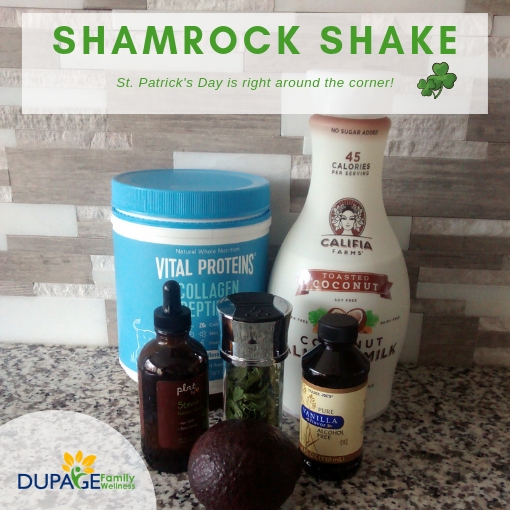
St. Patrick’s Day is right around the corner! Many people are anticipating a sweet, green, holiday tradition that is less than healthy. Yes, I’m talking about the Shamrock Shake!
This seasonal drink has been around since the 1970’s. Most people recognize that this shake is loaded with sugar and calories, but did you know that it actually consists of 35 ingredients? It will come as no surprise that many of these ingredients are not good for our health.
A Healthy Version
This year you may want to try this simple recipe for making a minty green shake that you can feel good about. The recipe not only avoids unhealthy ingredients, but is loaded with nutritious ones. Collagen peptides are know to support healing in the GI tract, reduce inflammation in the body, increase your metabolism, and support healthy skin, hair & nails. Avocados are high in potassium, aid digestion, contain antioxidants, and may help with morning sickness. Mint is said to promote digestion, relieve depression, and encourage alertness (although it can aggravate heartburn in some people).
Read more ...
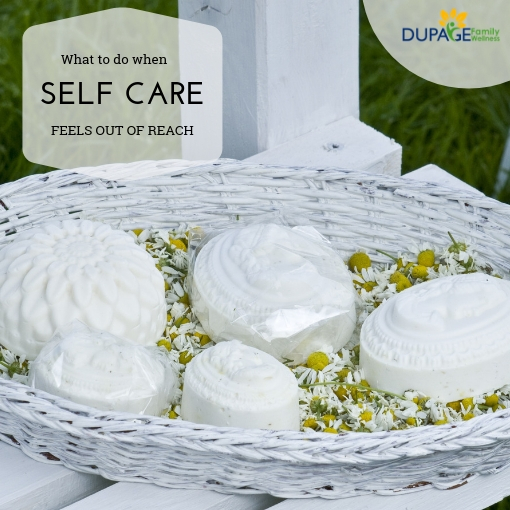 Self Care
Self Care
We’ve all heard that we need to make time for self care. We must “fill ourselves up” in order to have anything to give to others we are told. While some of us struggle with feeling guilty for taking time to ourselves, even those who don’t can find it very difficult to work self care into a busy lifestyle.
Do a little self care exercise with me.
- For the next couple minutes think about fun things that you would enjoy doing if you had a week to yourself. (Stick with me for just a minute. Don’t jump ahead!)
- Next take a couple minutes to think about what you would enjoy if you had a day, or even a few hours to yourself.
- Now think through some things that you enjoy doing when you have 5-30 minutes to yourself.
Which category was the easiest to make?
Most of us have many ideas about what we could do with a week of vacation, especially if a cook and nanny were provided! We can easily think about fun things to do on a day off or with a few hours to ourselves. While it’s fun to think about these things, for many of us those times are not a regular part of our lives. Waiting for the occasional vacation or day off can leave us feeling depressed, anxious and stressed.
Read more ...
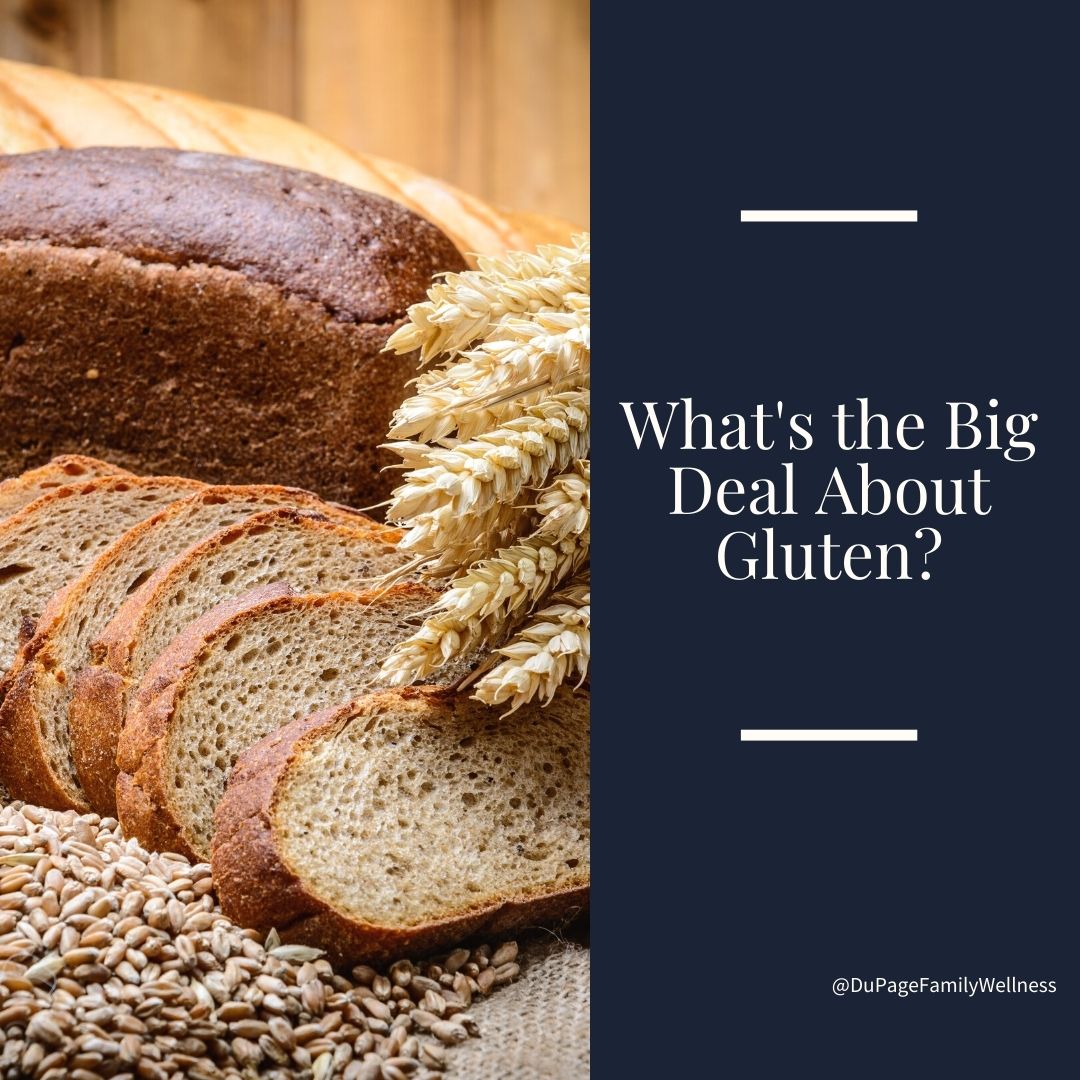 Have you ever wondered why so many people are going gluten free? Is eating a gluten free diet safe? What about women trying to conceive, pregnant, or breastfeeding? Let's take a moment to explore these issues, so that you can consider if this is something that could help you reach your wellness goals.
Have you ever wondered why so many people are going gluten free? Is eating a gluten free diet safe? What about women trying to conceive, pregnant, or breastfeeding? Let's take a moment to explore these issues, so that you can consider if this is something that could help you reach your wellness goals.
What is gluten?
Simply put gluten is the protein in wheat, barley and rye. People with celiac disease, an autoimmune disease triggered by gluten, must avoid gluten completely. However, Gluten is often blamed for contributing to a myriad of other health problems including digestive problems, skin issues, brain fog, ADHD, joint problems, infertility, and inflammation. Many people report wonderful results after embracing a gluten free diet.
Is a gluten free diet right for me?
One way to check if gluten is affecting your system is through an elimination diet. When doing an elimination diet gluten is strictly avoided for at least 30 days. It is then intentionally reintroduced, and any reaction is carefully noted. It is important to know that symptoms may appear immediately after eating gluten or may appear a couple of days later. These symptoms may include digestive issues, skin trouble, depression, low energy, etc.
What are some tips for going gluten free?
- If you go gluten free you will become a pro at reading labels (particularly the ingredient list). The first step is looking for wheat, barley, and rye. Products containing these ingredients contain gluten and will need to be strictly avoided. While it seems like this would be all that is necessary when going gluten free, it is important to know that there are many ways that gluten hides. Basic label reading
- Gluten often hides in soups, sauces, fillers, thickeners, beer, most oats, personal care products, and makeup. It can be found in food starch, malt, soy sauce, spelt, semolina, etc. There is a learning curve when you eliminate gluten from your diet. The important thing is to embrace what you know as you continue to grow in your awareness. Places gluten hides
- As you first eliminate gluten containing items from your diet, you may start to wonder what you can eat. While there are many gluten free products on the market, there are also many naturally gluten free foods. Vegetables, fruits, nuts, seeds, and dairy are all naturally gluten free. Meat can be tricky if it’s processed, but in its natural form it should be gluten free as well. Gluten free foods
- It is important to recognize that not all gluten free food is healthy. Rather than switching your breads, pastas, and baked goods for the gluten free version, I would opt for nutrient dense foods such as fresh vegetables, fruits, and meats which are naturally gluten free. Replacing the typical processed foods in our diet with gluten free processed foods, will not give our bodies what they need to thrive.
Is there a downside to eliminating gluten?
There is nothing in gluten that your body needs, so your diet won’t be deficient simply from avoiding it. My biggest concern with people going gluten free is if they become overly fearful unnecessarily. Unless you have Celiac Disease or notice an impact from gluten after doing an elimination diet, it is likely that you can tolerate some amount of gluten. While it doesn’t need to be a staple in your diet, cutting it out completely can cause a lot of stress especially in social situations. Since we know social connections are important to our health, I don’t want an unwarranted fear of gluten impacting your ability to have a rich social life.
If you want to learn more about how a gluten free diet could help you towards your wellness goals, check out the following resources…
As always, I am here to support you in your wellness journey! So, if you need some extra support, feel free to schedule a nutrition consultation where we can explore what dietary changes may be best for you.
Dr. Jamie
 Everyone knows that exercise is important! But what if I told you that I was more concerned about the level of movement in your life, than how much you exercise?
Everyone knows that exercise is important! But what if I told you that I was more concerned about the level of movement in your life, than how much you exercise?

 Many patients are afraid to incorporate fats into their diet, believing that eating fat will make them fat. They eat a lot of chicken breast, steamed veggies, low-fat milk, low-fat yogurt, and salads with fat-free dressing. It's not their fault. They have been taught for years by the media that eating fat is going to make them fat, BUT this is simply not true!
Many patients are afraid to incorporate fats into their diet, believing that eating fat will make them fat. They eat a lot of chicken breast, steamed veggies, low-fat milk, low-fat yogurt, and salads with fat-free dressing. It's not their fault. They have been taught for years by the media that eating fat is going to make them fat, BUT this is simply not true!
 Self Care
Self Care Have you ever wondered why so many people are going gluten free? Is eating a gluten free diet safe? What about women trying to conceive, pregnant, or breastfeeding? Let's take a moment to explore these issues, so that you can consider if this is something that could help you reach your wellness goals.
Have you ever wondered why so many people are going gluten free? Is eating a gluten free diet safe? What about women trying to conceive, pregnant, or breastfeeding? Let's take a moment to explore these issues, so that you can consider if this is something that could help you reach your wellness goals.